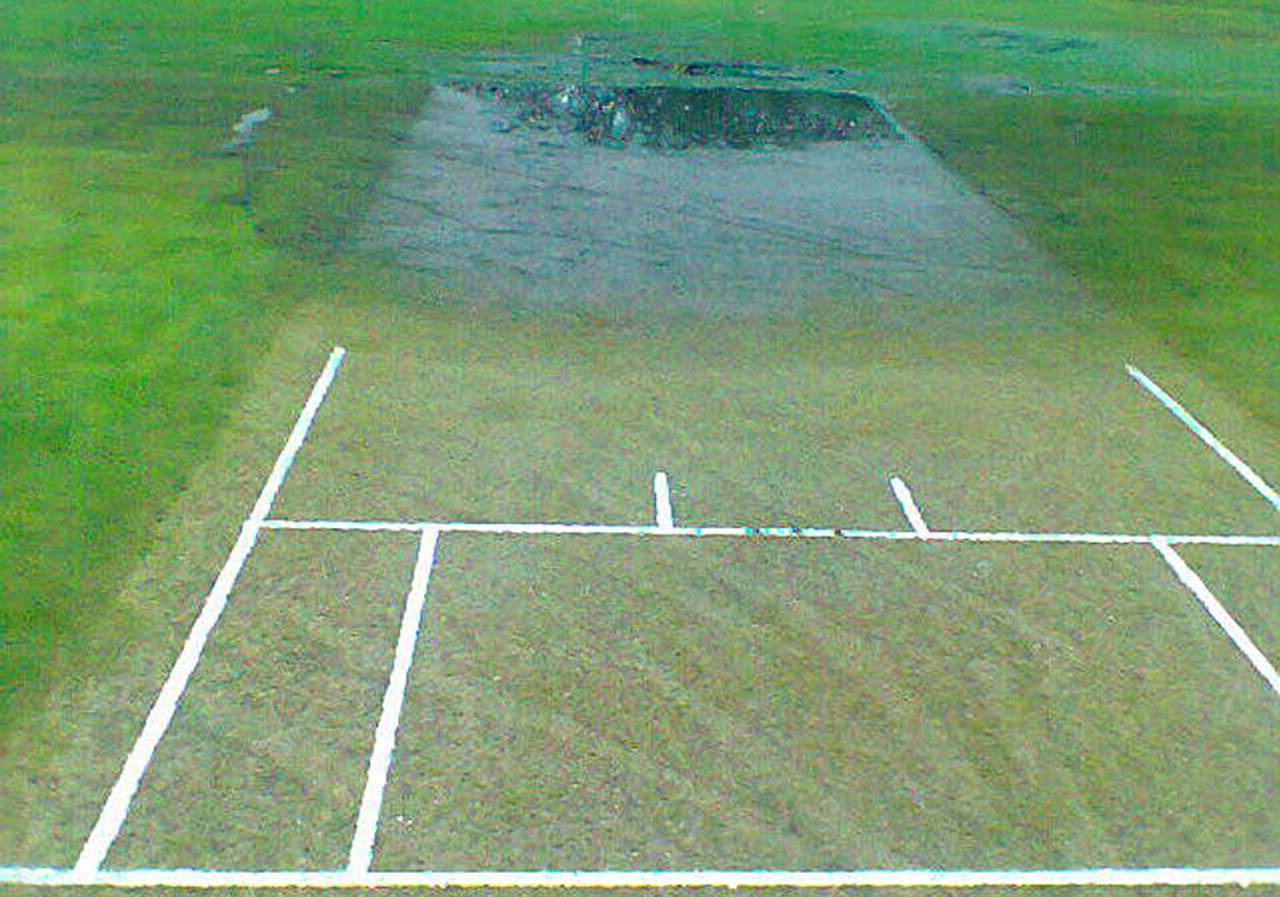The ground was utterly charming, hedged on three sides and with a ramshackle stone wall marking the boundary of the other, and the views all around were of the great chalk cliffs that edge the South Downs. From one, paragliders launched themselves into the thermals. A little inland, a castle stood on a hill above the nearby town. The outfield rose and fell with the bumps and swales of a seaside links. On a summer's afternoon, it was picture perfect. And then we took a look at the wicket...
It was tufty with sun-baked grass that moved queasily underfoot. It hadn't seen a roller in some years, if ever. Most terrifying of all were the small craters dotted all over it, filled with granules of loose black earth. They were quite easy to scoop up in handfuls.
It has been many years since I've played on a genuinely bad track, and it didn't need a Sky Sports expert's pitch report to reveal that here was one in all of its dangerous glory. The ball wasn't just going to disturb the surface under the lens of a super slow-mo television camera because in lots of places there was no surface, or at last not a solid one.
I've had a long-standing fascination with cricket's first golden age, when every wicket was like this. Watching the first few overs on it from the pavilion, I wasn't quite so sure I wanted to see one up close. There was tennis-ball bounce, which was okay. But there was also cricket-ball bounce, and that wasn't half as much fun. Some leapt up throat-high from a good length. Some crept along the ground like thieves in the night. Most dramatically, a very few erupted from the edges of the craters and went almost vertically upwards, sometimes slowly, sometimes with fizzing speed…
The era of the unpredictable, even unplayable, wicket really lies in the bombshell pitches of the Victorian age, from the legalisation of overarm bowling in 1864, when the colossus, WG Grace, was 15 years old. Now the ball was coming down from height onto wickets that were little more than extensions of the outfield, which itself bore little relation to the manicured perfection of the modern Test ground.
It was a bowler's game, with the most feared delivery being the "shooter". Grace once brought Lord's to its feet by keeping out three in succession. Some words from the Telegraph, written in the season of 1869, nicely demonstrate the existing balance of power: "Watching most other men - even good players - your main object is to see how they will defend themselves against the bowling; watching Mr Grace, you can hardly help feeling that the batsman himself is the assailant. You want to know not how he will keep up his stumps, but where he will choose to hit."
Grace, and then Fry and Ranji were the giants who brought batting from an exercise in survival to an act of aggression, and they did it on pitches that would cause abandonments today.
And perhaps the pitch was responsible for a delivery that EW Swanton described as "the most famous ball ever bowled", the mythic, rapid bumper that passed through WG's beard, carried on up and over the wicketkeeper and hit the sightscreen.
That Ernest Jones was the bowler is undisputed, although the venue remains the subject of some argument: Pelham Warner claimed the incident happened at Lord's in the Test match of 1896 against Australia, while CB Fry wrote in his autobiography, Life Worth Living, that it took place several years earlier at Sheffield Park in Sussex, where he and WG were turning out for Lord Sheffield's XI. Fry even recorded the conversation, with Grace growling: "What the hell are you at, Jonah?" and Jones replying, "Sorry doctor, she slipped…"
One hundred and eighteen years later and our No. 10 wasn't quite as lucky as Grace. Bravely he got into line with a short ball and lifted his hands up high to hook. The ball flew behind square. I was batting at the other end and called him through for a run, so solid had the contact sounded. And the contact was solid, but not with the bat, with his mouth. There was blood on the wicket to go with the loose soil and the tufts of grass. He shoved a tissue in his mouth and batted on.
When their openers came out, they were both in helmets. The first ball landed on a length and climbed vertically. It went about two feet over the batsman's head, eluded the wicketkeeper's one-handed leap and flew to the boundary, Ernest Jones-style. It was chilling and thrilling all at the same time, a tumble back down the years to a very different game.
Jon Hotten blogs here and tweets here

